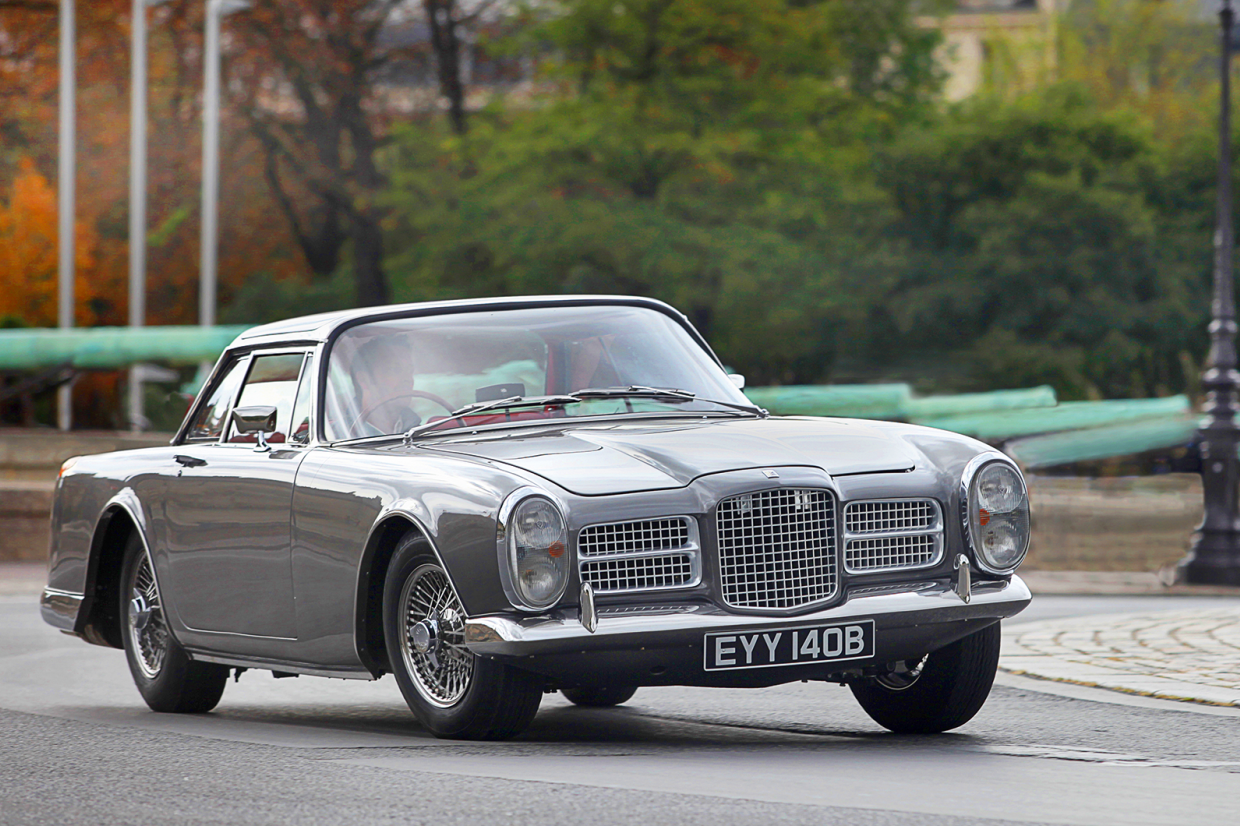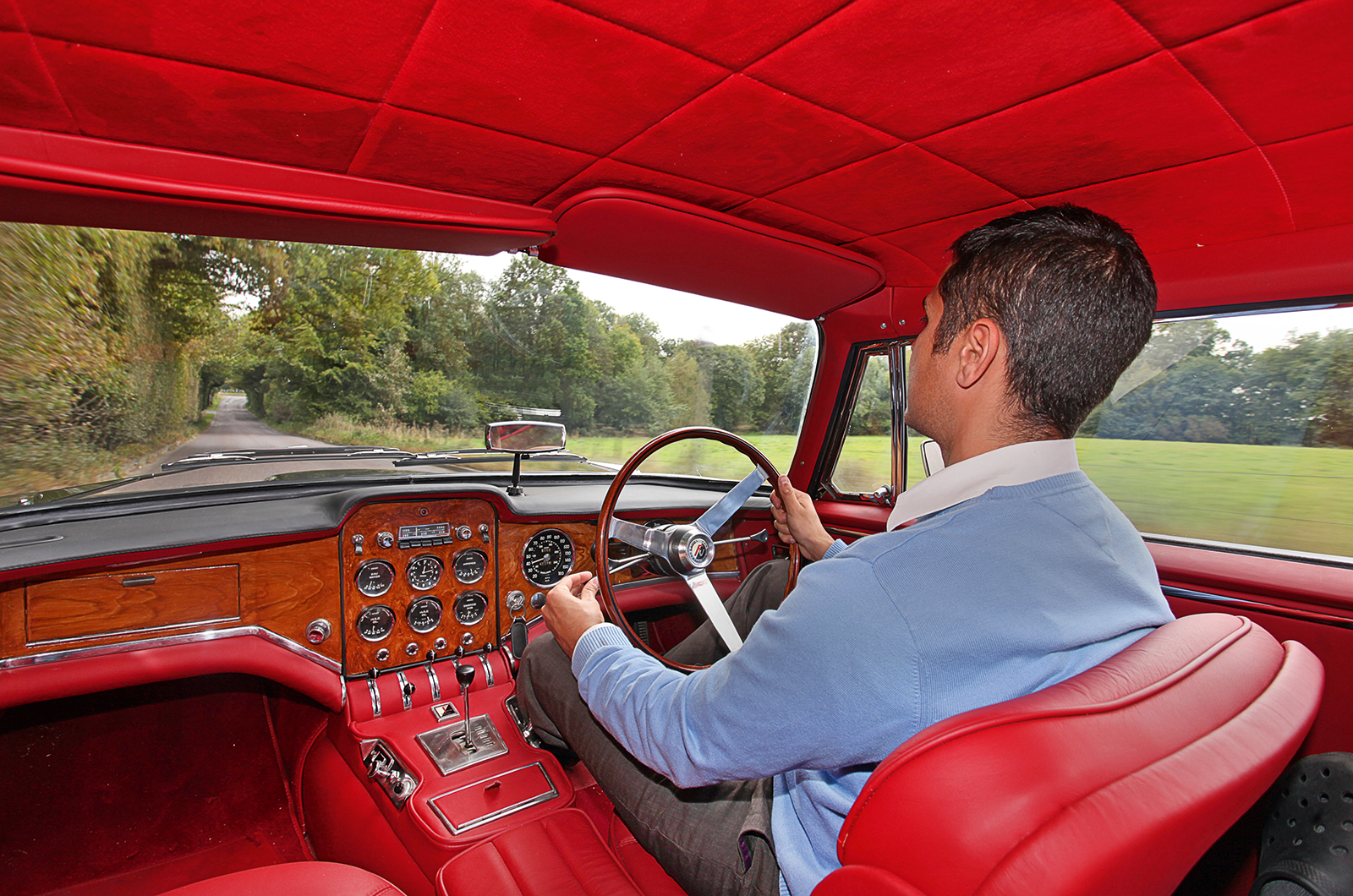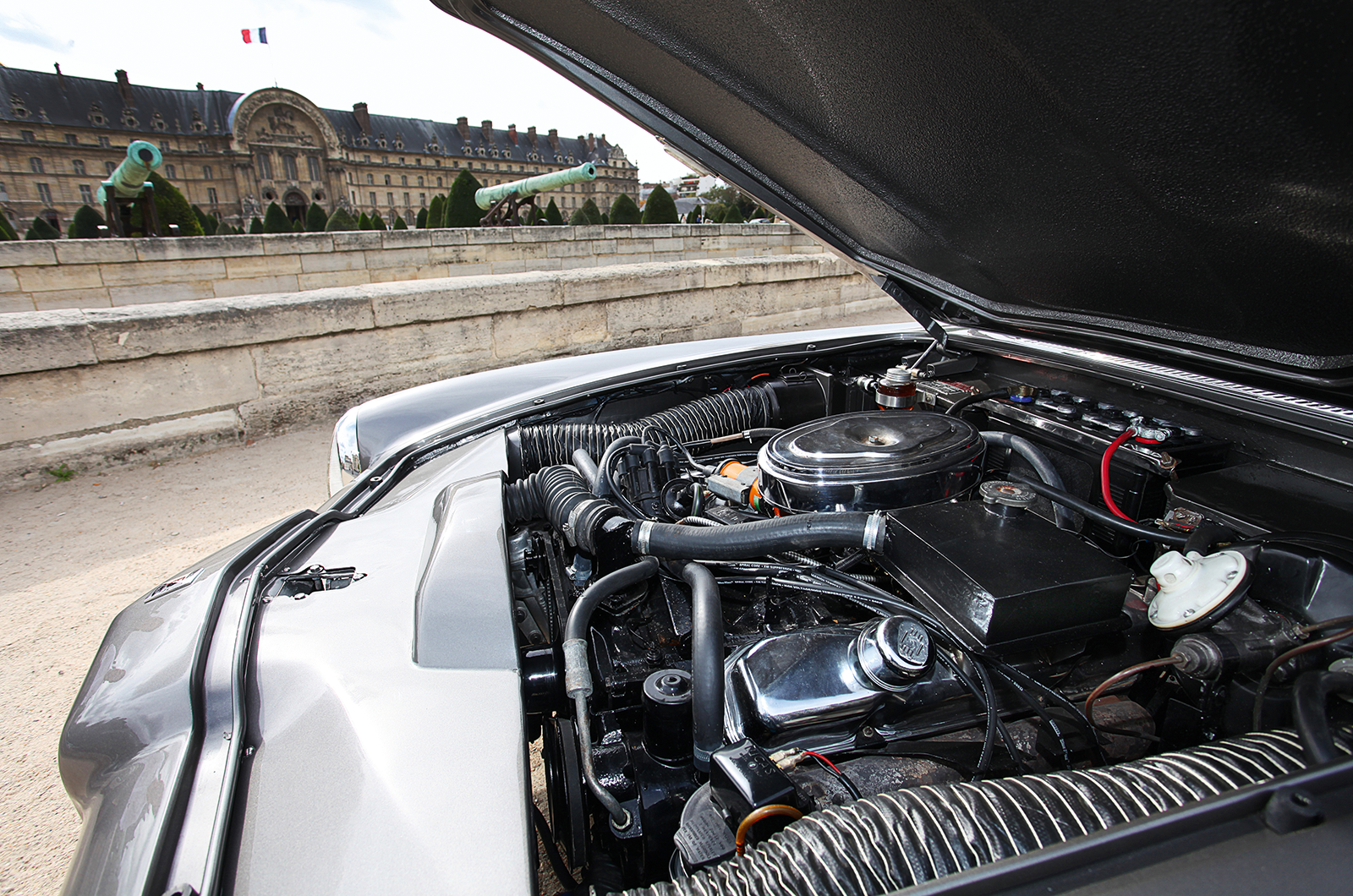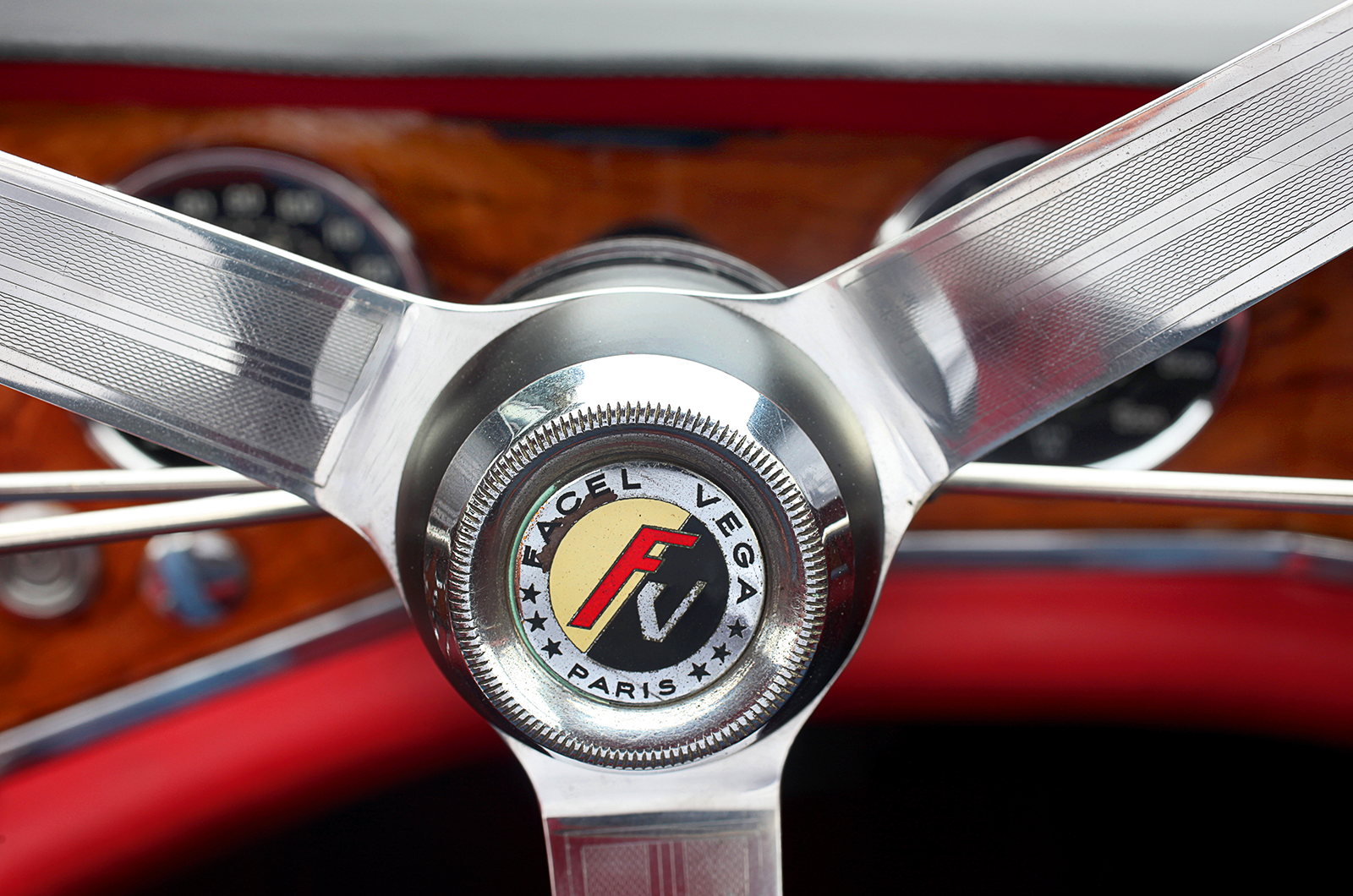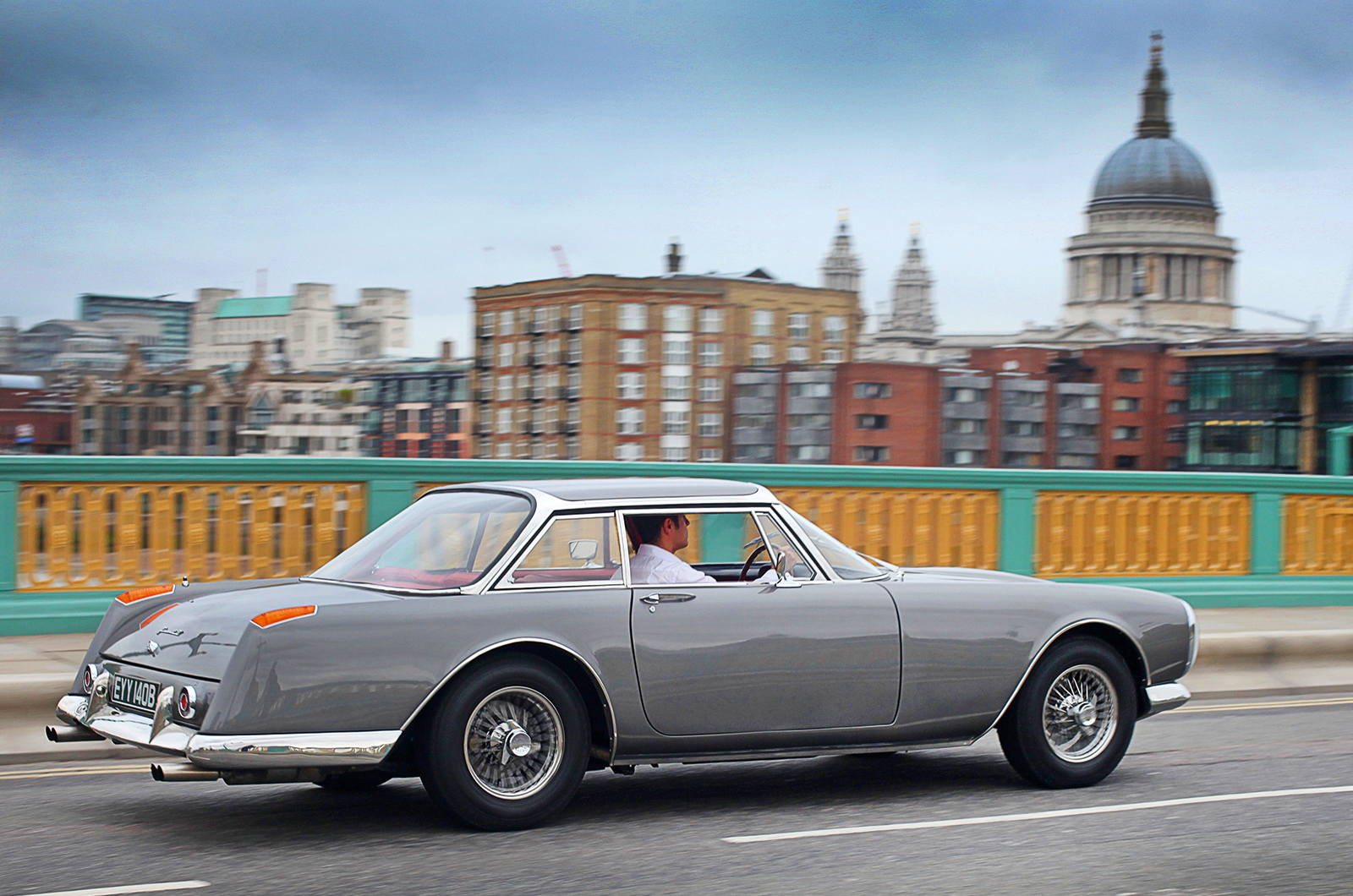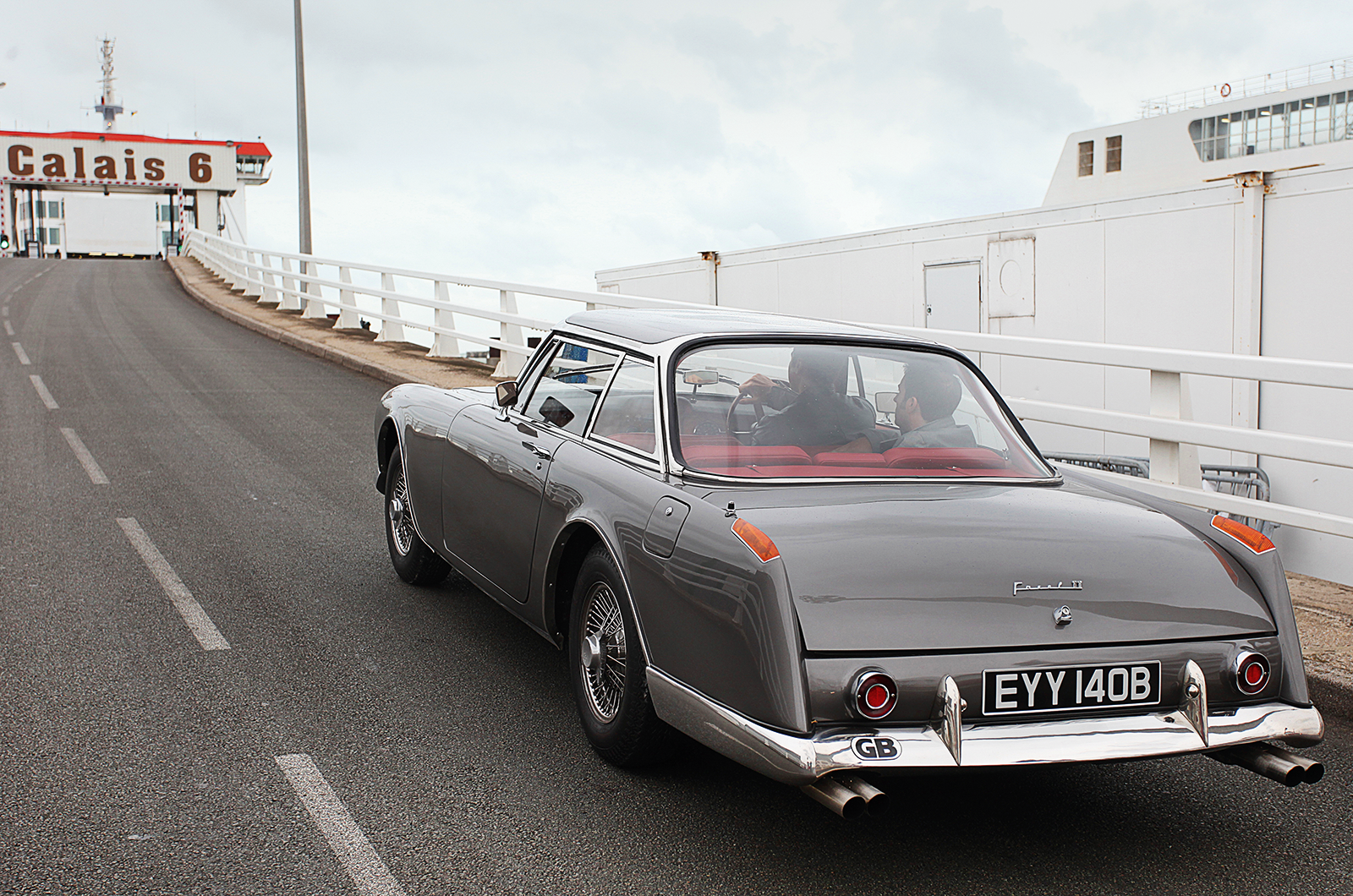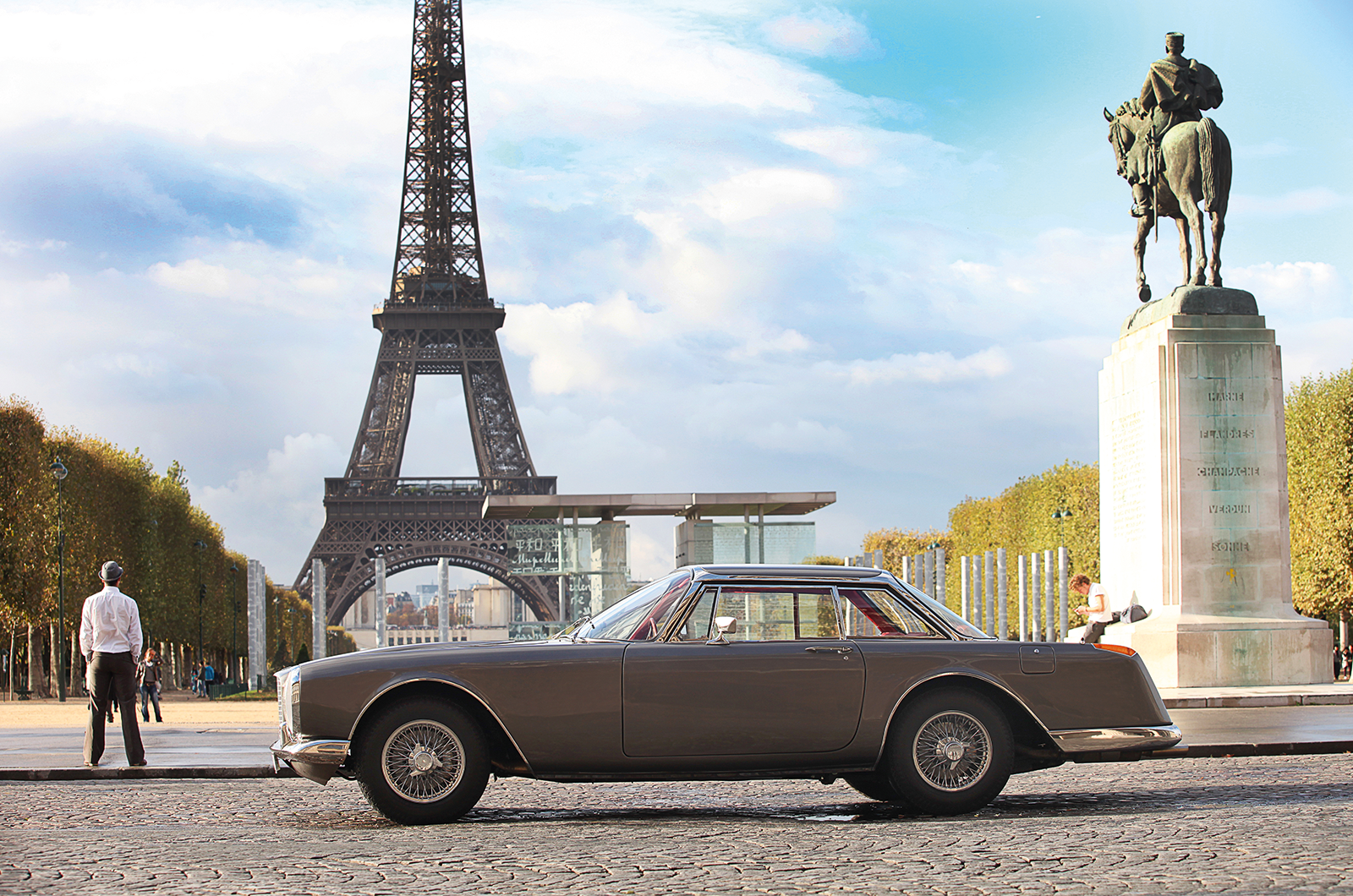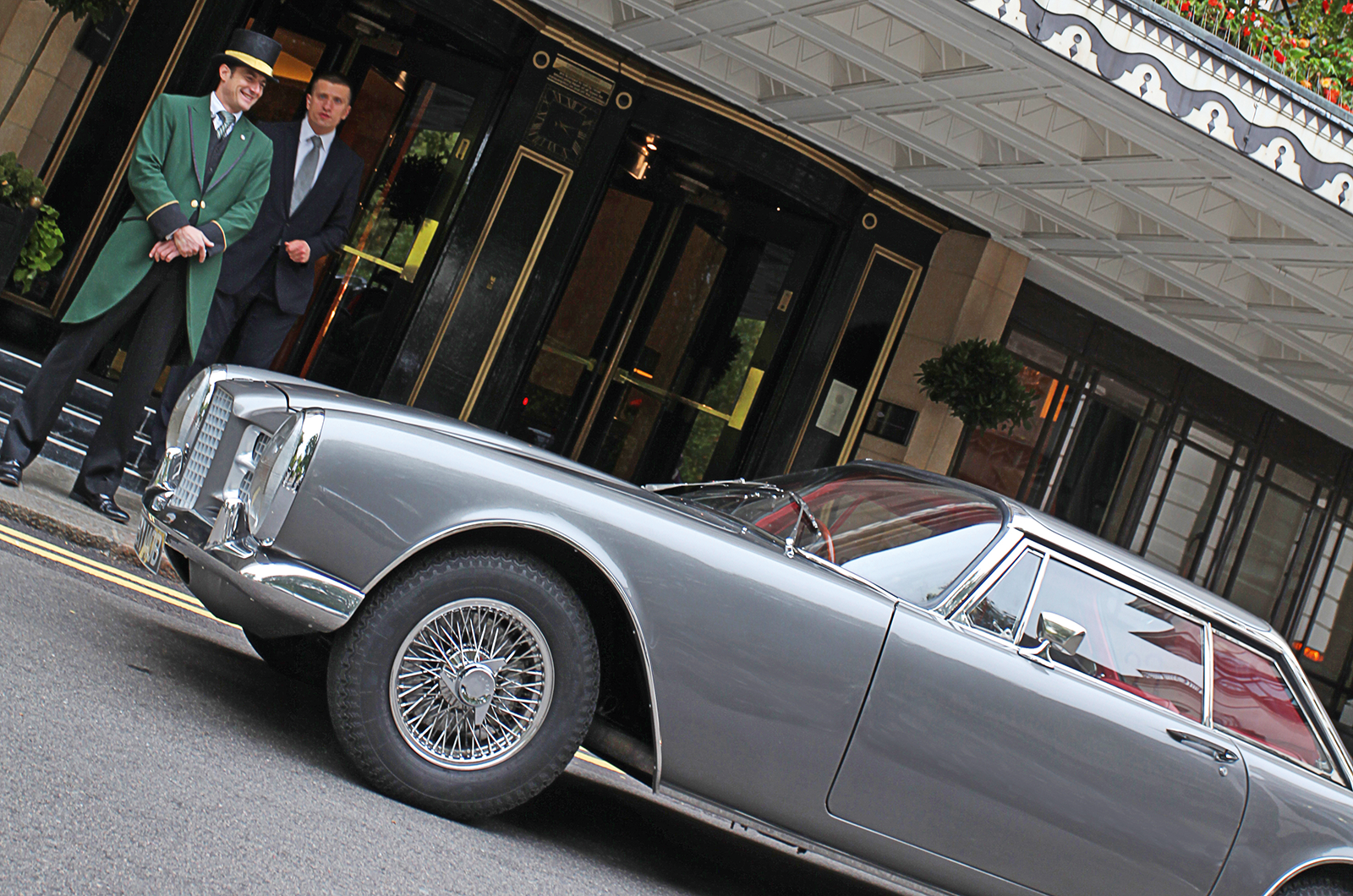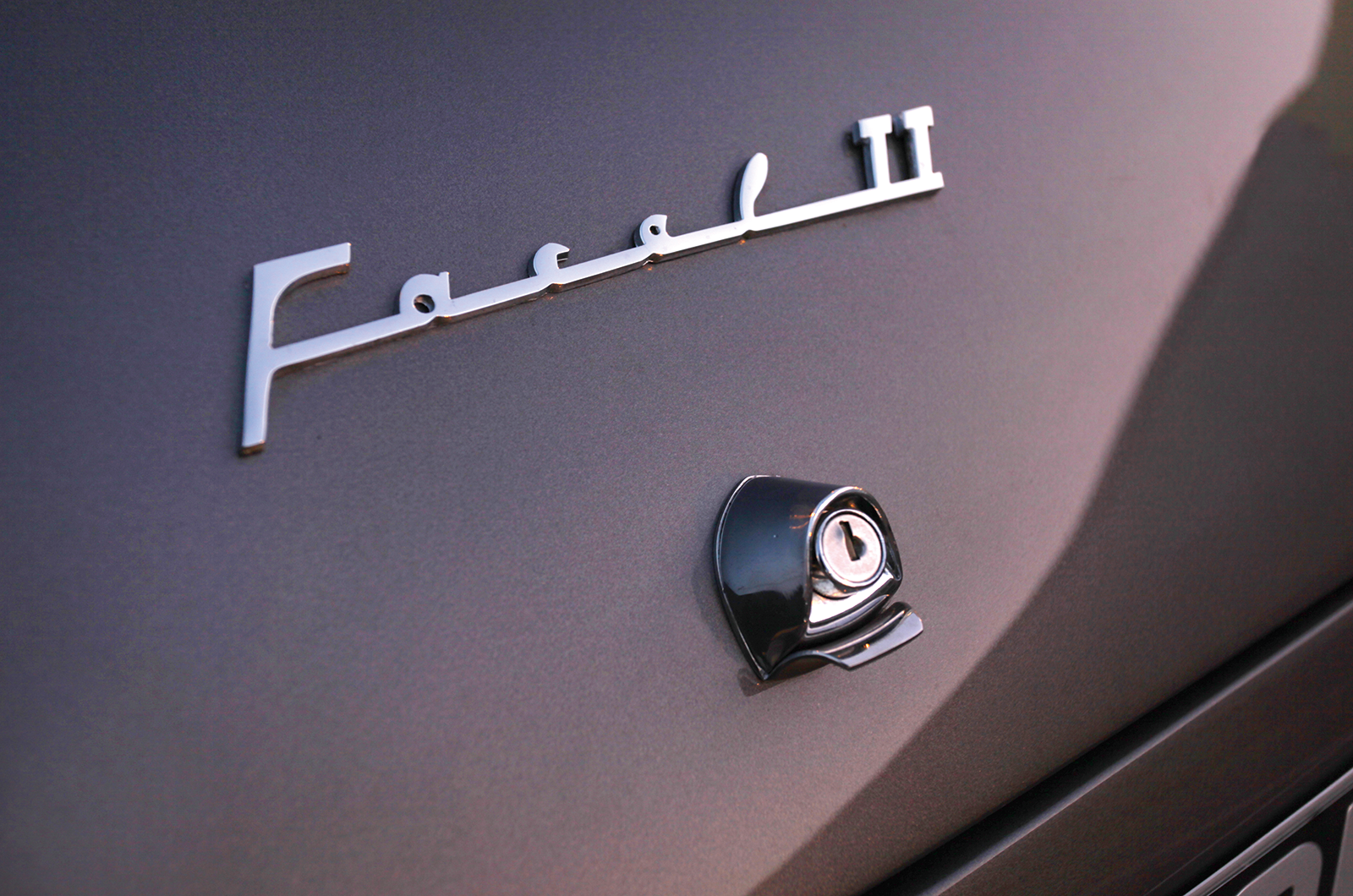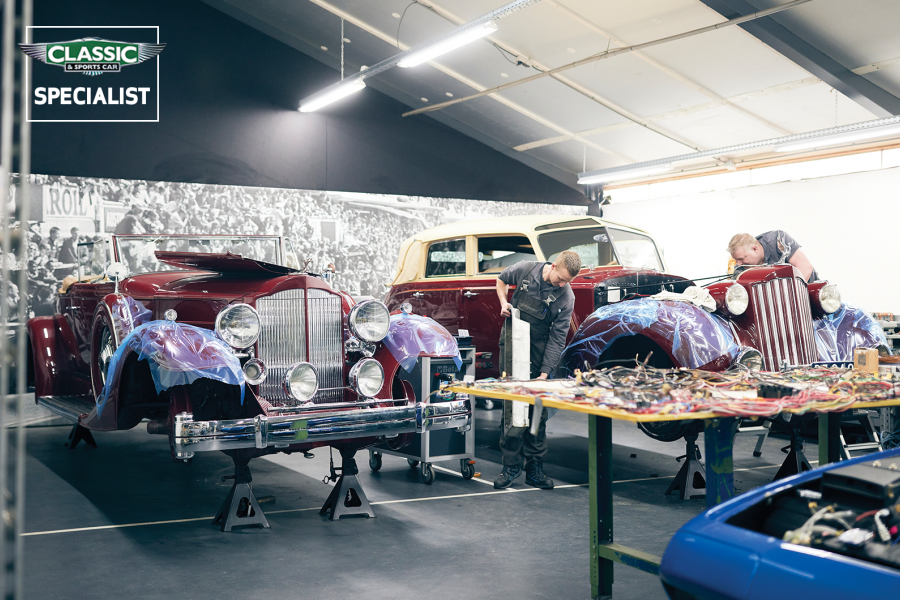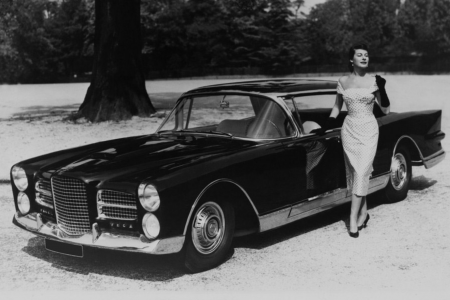Once we reach England, we’re soon through Customs and on our way.
The Facel II is a consummate straight-line missile, but we momentarily duck off the main route to the capital to see how it handles on Kent’s twisty country lanes. Interestingly, is the answer.
The conventionally sprung suspension provides a comfortable ride, and adjustable rear dampers help to counteract variations in load.
Yet, although it doesn’t roll as much as it looks as if it might, handling isn’t its strongest suit. There’s a tendency to understeer but it is predictable, and there’s plenty of power on tap to aid corrections. The manual, twin-carburettor option released an additional 45bhp from the V8 – what a raging beast that must have been.
In town, we take the A2 through the Blackwall Tunnel and then burble quietly through a deserted City of London.
On the Embankment there’s gridlock, and the heat-soak from the tight-fitting engine is incredible; thankfully air conditioning came as standard in all models, so we turn it on to regain some cool.
When we stop to refuel, the sloping forecourt really accentuates the beauty of the Facel II’s low-slung rear end and we stand staring in awe.
A Porsche 911 turbo sits at the next pump, and as the owner returns he eyes the Facel. I can see his mind frantically turning over, trying to work out if it usurps his own steed. His eyes move down to the bonnet. I don’t wait for the question: “6.3 litres,” I say.
In the game of engine Top Trumps, mine’s bigger than his. He disappears in an irate cloud of wheelspin and accompanying Teutonic exhaust bark.
Two minutes later, we arrive at our final destination. The doorman at The Dorchester approaches.
Reaching the end of the journey, at The Dorchester hotel in London
“Magnifique, monsieur. Magnifique,” he says, opening my door. I couldn’t agree more. But while the Facel II looks comfortably at home in these swanky surroundings, I’m unsure as to why we’ve ended up here.
As he exits, Banks reaches into the glove compartment and I see he’s retrieved our beer-mat contract. On the front is the original agreement. He flips it over to reveal the costs of the journey to me, written and signed in my own hand: ‘lunch at The Dorchester’. How did I miss that?
I give a wry smile as I hand the keys back to their rightful owner. It’s been an epic journey but there’s a nagging sense of regret.
Production of all the company’s models lasted but one single decade. As I stare at the majestic Facel II, however, I realise that its Franco-American legacy is proof indeed that the brightest stars burn fastest and most furiously.
Images: James Mann
Thanks to Mike Harting, P&O Ferries; French Government Tourist Office; The Dorchester
This was originally in our April 2012 magazine; all information was correct at the date of original publication
Factfile
Facel Vega Facel II
- Sold/number built 1961-’64/182
- Construction steel tubular chassis, welded pressed-steel body
- Engine all-iron, ohv 6286cc 90° V8, with single four-barrel Carter downdraught carburettor
- Max power 355bhp @ 4800rpm
- Max torque 440lb ft @ 3300rpm
- Transmission Chrysler Torqueflite three-speed automatic, driving rear wheels via (optional) limited-slip differential
- Suspension: front independent, by coil springs and wishbones, telescopic dampers, anti-roll bar rear live axle with semi-elliptic leaf springs and Armstrong Selectaride adjustable lever-arm dampers
- Steering Hydrosteer power-assisted worm and roller
- Brakes 12in (305mm) front, 11½in (292mm) rear Dunlop discs, with servo
- Length 15ft 1in (4750mm)
- Width 5ft 11in (1760mm)
- Height 4ft 5in (1280mm)
- Wheelbase 8ft 9in (2667mm)
- Weight 4060lb (1841kg)
- 0-60mph 7.8 secs
- Top speed 133mph
- Mpg 14-17
- Price new £5570
READ MORE
Concours sensation: Talbot-Lago T26 Grand Sport
The forgotten Delahaye
Citroën DS19: the green goddess
Ross Alkureishi
Ross Alkureishi is a contributor to Classic & Sports Car
